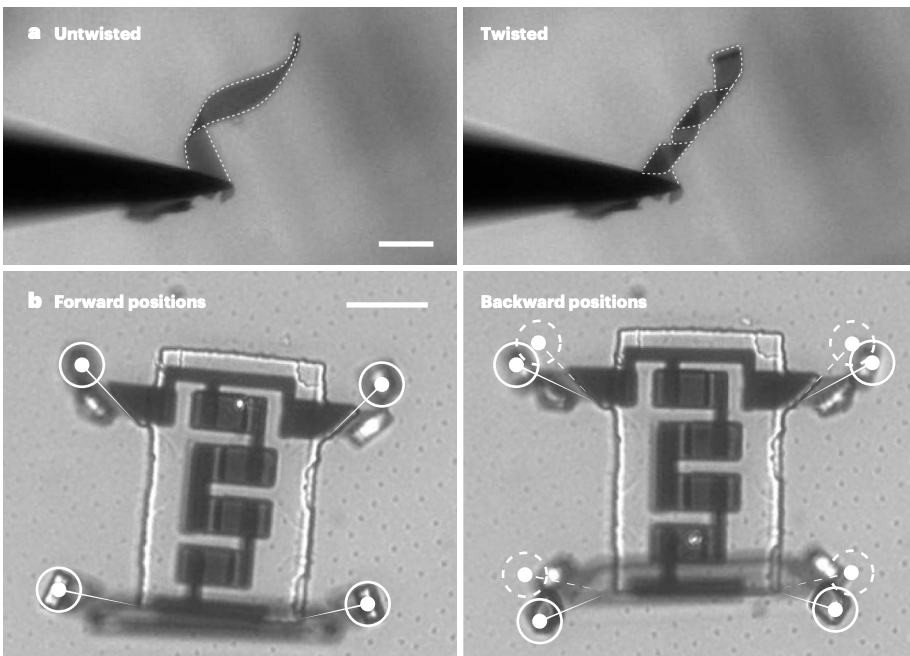Scientists create 'army of tiny walking robots' in major breakthrough
Your support helps us to tell the story
From reproductive rights to climate change to Big Tech, The Independent is on the ground when the story is developing. Whether it's investigating the financials of Elon Musk's pro-Trump PAC or producing our latest documentary, 'The A Word', which shines a light on the American women fighting for reproductive rights, we know how important it is to parse out the facts from the messaging.
At such a critical moment in US history, we need reporters on the ground. Your donation allows us to keep sending journalists to speak to both sides of the story.
The Independent is trusted by Americans across the entire political spectrum. And unlike many other quality news outlets, we choose not to lock Americans out of our reporting and analysis with paywalls. We believe quality journalism should be available to everyone, paid for by those who can afford it.
Your support makes all the difference.Scientists have been able to create an army of tiny, walking robots in a new breakthrough.
The objects are the first microscopic robots that are made out of semiconductor components. That allows them to be controlled and forced to walk with standard electronic signals, allowing them to be integrated into more traditional circuits.
The researchers behind the discovery now hope that they can be built into even more complex versions. That could allow for future robots to be able to be controlled by computer chips, produced en masse – and built in such a way that they could travel through human tissue and blood, acting like surgeons, the researchers say.
"The authors’ robots, although not autonomous in their current form, can be seen as a platform to which ‘brains’ and a battery can be attached," wrote scientists Allan M Brooks and Michael S Strano, who did not work in the study, in an article accompanying the announcement.
The major breakthrough of the new research was the creation of tiny electrochemical actuators, which are then used to form the legs of the robots. Those legs are about 0.1mm in size, or about the width of the human hair.
Despite their tiny scale, the robots can be operated when stimulated with lasers, allowing them to walk.
Engineers are able to operate them by hitting the legs with ultralow currents, which force the legs to twist and then untwist, moving the robots forwards and backwards as they do.

What's more, the robots can be created in huge numbers, with the researchers behind the new paper producing more than a million of the walking robots on just a 4-inch piece of silicon.
The scientists behind the study claim that the robots are the first to be created that are smaller than 0.1mm that can be controlled with on-board electronics.
What's more, they are able to withstand harsh environments, continuing to work even in the face of highly acidic conditions and extreme temperature variations. Since they could be injected through hypodermic needles, a version of the robot could be used to explore the inside of animal or human bodies, the researchers say.
There are still major limitations to the robots, the researchers accept. They are slower than other comparable robots that are able to swim, they are unable to sense their environments, and they have to be controlled from the outside.

As such they are something like "marionettes", rather than a fully autonomous robot. While such an approach allows for impressive demonstrations of the technology, researchers note that some degree of autonomy will be required before such miniature robots can be used for real practical applications.
But if researchers are able to integrate breakthroughs such as these with more advanced autonomous systems then they could make it possible to fulfil Nobel laureate Richard Feynman's vision of it being possible to "swallow the surgeon" and "make a tiny robot that could travel through blood vessels to carry out surgery where needed", Brooks and Strano wrote in their accompanying Nature article.
The research is described in a paper, 'Electronically integrated, mass-manufactured, microscopic robots', published in Nature today.

Join our commenting forum
Join thought-provoking conversations, follow other Independent readers and see their replies
Comments